Pelagos
Through Chaos, Life also emerge. Among The Oceans, where the Starfall caused natural disaster, the aftermath left burgeoning life. Behind the Reefcrown, where no pirate dares set sail, lives variant creature, changed by the arcanic exposure of the Star Rocks. Among them, new species developed sentience, intelligence at a surprising fast rate. These curious and hardworking amphibians now set their place on their isolated island covered by corals. As a guardian of nature, it is my duty to protect them, but also let them live by themselves. I shall let them grow, watching with a silent eye until my successor arrives on this land untouched by man's filthy hand, yet...-Ko-Konats, High Crab Witch
Basic Information
Anatomy
Mature Pelagos have a skeleton , a tail, a head and two arms. They travel by lateral undulation, or serpentine movement. They have 4 fingers, including a thumb.
Genetics and Reproduction
For reproduction, the female have a very limited production of eggs. A normal female pelagos could have enough to make one or two eggs in her life, but the seers and especially the queen can manage to make more, because of their consumption of more nutritious salt. A queen can expect to bring about in around a hundred in her lifespan.
Growth Rate & Stages
Pelagos emerges from their egg after around 3 months in hot water. Most being delivered in the lagoon. At eclosion, they keep a larva state for around 3 to 4 months.Most stay hidden in the lagoon's bottom for feeding on sediments and minerals, but others stay on the back of the lagoon's giant turtles, cleaning them by eating the alguas and salt deposits when they swim around. After reaching their post-larva state, their instinct incites them to pass the river's currently dropping in the lagoon. As they manage over time to develop enough muscular strength to swim against the current, they will reach the village, and be considered adults, the river being a rite of passage. A Pelagos will continue growing for about the next 6 years, reaching then full body maturity. Aside from the usual aging process, they won't grow or change further past that mark, but their muscles failling to hold their body will inevitably arrive in an advanced age.
Pelagos takes an average of 6 years to reach full body maturity. Middle Age comes around 52 years, Old age around 85. Venerable 105.
Ecology and Habitats
The body heat of the Pelagos makes me more at ease in tropical settings. The high humidity help them stay longer on the surface, which is an important factor for them. The pelagos settlements looks like a mix of makeshift shipwreck refuge and other gatherings. Respectful of the nearby nature, they mostly avoid to disturb the fauna and flora. They build and invent tools with shipwrecks scattered around the island, and when needing to hunt or protect the village from beasts, they waste nothing, using the hides, meat and bones to various purpose. Most pelagos lives underwater, but some live on the surface, making homes with larges abandonned sea shells and other debris. Pelagos pride themselves in many varied housing from what the nature gives them.
Dietary Needs and Habits
The pelagos don’t consume meat, as children of the earth, they feel as eating meat of sentient beings is a selfish act as they can easily survive with what grows on the island. They mostly eat alguas, coconut and bean sprouts, with other variant fruits. However, they favorite food is salt rock. It is also a crucial part of their diet, as the arcanic residues in the island rock salt
provides them a better “natural” constitution over time. They can live without, but then become way more prone to maladies and infections. The most delicacy of rock salts variants are the crimson crystals, which are offered to their seers to enhance their divinations. Regarding the crimson crystals, the pelagos seers have a better average constitution over other races due to their more frequent consumption, but a seer falling to overdose isn’t uncommon.
Biological Cycle
After the post-larvae stage, some arcanic salt rocks start to deposit and stay in the soft Pelagos tail. After a year, the tail hardens, letting those rocks hold in their tail. they can use them for self-defense, but most Pelagos parade them, as all tails look different, be it by rock colors, size, and texture. Over time, the rocks color will lose saturation until they become fully grey in an advanced age.
Still a young races which evolution was accelerated by the arcanic deposits, they are dependent to nutrients made from it, like arcanic salt rocks and crystals. If they to consume regularly, their skin will grey and limbs will wither, condemning to death in mere days.
Additional Information
Social Structure
Gynarchy/Theocracy. The pelagos follows the advices of the Seer council, which are guided by the Queen’s interpretations of her divinations which she shares with them. Aside from these two roles, the other pelagos works either as guard, royal guards or normal citizens. Citizens are encouraged to work in things they feel most comfortable at. Most of the jobs relies as Scavengers, Farmers and Boat Makers. Work is rarely supervised, yet the pelagos have a strong sense of community and gladly contribute to the betterment of their village. The pelagos are not represented in any big city embassy toward the world yet.
Facial characteristics
Pelagos have no teeths but have strong maceters muscles with their beakmouth, able to tear and crunch. They use it to good effect to crack coconuts. All of them have yellow eyes with black sclera, unless an exceptional birth defect.
Geographic Origin and Distribution
99%: Man'gaihi Island
Perception and Sensory Capabilities
Pelagos manage to see details up to double their vision from land when immersed in water. Their ears have membranes vibrating pulsations to also echolocate, but only in water. When living on land, One pelagos must usually apply water on their eyelids to continue moisturisation. Failure to apply water after 8 hours usually involves blurry vision, which can worsen to total blindness after a day. However, when they live in humid lands like the lagoon, they can absorb the humidity or fog around them to moisturise themselves.
Civilization and Culture
Naming Traditions
Plural: Pelagoi
Average Technological Level
Most items used by the pelagos are makeshift or primitive version of tools they found in shipwrecks or developped over time.
Major Language Groups and Dialects
Being isolated, Pelagos speaks with their own language they developed through the years. The Fiji language is a core reference of their spoken alphabet for reference. However, their alphabet is mostly made of symbols which they carve with primitive tools, or paint with fruit paste or colored sands.
Common Dress Code
Most Pelagos don't really have particular dress codes. Aside from using shells as hats and arm protection, they rarely wear clothing except if they feel like it. However, the high council usually wear uncolored shrouds made of cocoon silk to help reckognise them.
Culture and Cultural Heritage
The pelagos strongly appreciates the “natural” aesthetic of things they find on the island, seeing them as how their deity wants it to be. So they then to keep the materials they use as is, trying to avoid transforming matter. This makes it like a pelagos hut is never the same as the other, some may be made from a giant ermit crab shell, others from stone with parts of sunken pirates ships found nearby… they represent the owner as much as the equipment they wear on daily. Most pelagos wears clam shells as top hat and corals as protection/weaponry, but they all enjoy to show the different colors of their outfits, and particularly enjoy shining gems, more found nearby the volcano.
Common Customs, Traditions and Rituals
The pelagos have few holidays, but one every 4 years comes around the summer on different days; The Crimson Dream. During a blood moon, The pelagos prepares for hunting nearby as this event provoques more feral behaviours from the fauna. When the night ends, the following day is passed by bringing the animal corpse to the Hot cascade on the other side of the island. After having the animals skinned, they put the carrions in the steamy river under the cascade and recite chant hoping it will help purify the beasts and bring them back to the Crown Mother’s (as the carrion gets consumed by lurking deep eels living underneath the island). After that, a celebration with all of the village occurs to celebrate the balance of things and the resilience of the slugs through hardship and cooperation.
History
The first Pelagos emerged of the Man’gaihi lagoon due to arcanic exposure. During the Starfall, one pure chunk of arcanite crashed on the young ecosystem of Man’gaihi island, fracturing the island partially and creating a magic-induced volcano. The first eruption created arcanic salt that spread in the vicinity of the island after many downpours.
Fearing that colonists may try to exploit that island for ill purpose, the Crab Witch Ko-Konats altered the winds and sea currents nearby the island, while also filling the nearby reefs with dangerous stalagmites so his access becomes incredibly deadly to anyone trying to reach it. Aside from other Natural Witches or Pirates of extreme bravery and equipped for the task, this island was now isolated from the human race. Overtime, the arcanic residues blended with the flora and fauna, up to mutating the evolution of sea slugs nearby. These soon became a whole new amphibious race called the Pelagos. Overtime, they also found their purpose and theology with the shrines Ko-Konats built in the island as magic focuses and itinerant temples to her goddess (which the Pelagos named and interpreted slightly differently).
Historical Figures
Queen Araz : First queen of the Pelagoi
Queen Tapuawa : Current queen of the Pelagoi
Interspecies Relations and Assumptions
Being a very secluded race, the pelagos did't had positive or negative relationships at the moment. The only knowledge they had was from mostly human by discovering paints and writing in some shipwrecks. Curious, they however are wary of strangers, unsure how to behave since they don't know much yet. But in their mostly generous and pacifist nature, they usually don't show hostility unless provoked.
Lifespan
120 years
Conservation Status
The Pelagos are mostly unknown by most other species and races of the world. The close entirety of the race remains on the Man’gaihi lagoon. Without really knowing, they are under protection of the Crab Grand Witch, Ko-konats, which made their lagoon almost impossible to reach by mundane means.
Average Height
Common: 1.1-1.4 meters
Guards: 1.3-1.6 meters
High Guards: 2.4-3.2 meters
Body Tint, Colouring and Marking
Most Pelagos have a blue skin, with variant of light green or purple, to blend better with the lagoon. However, their tails having different colored arcanic rocks and all of the wearing unique shell protections makes them easier to differentiate from one another.
Related Materials







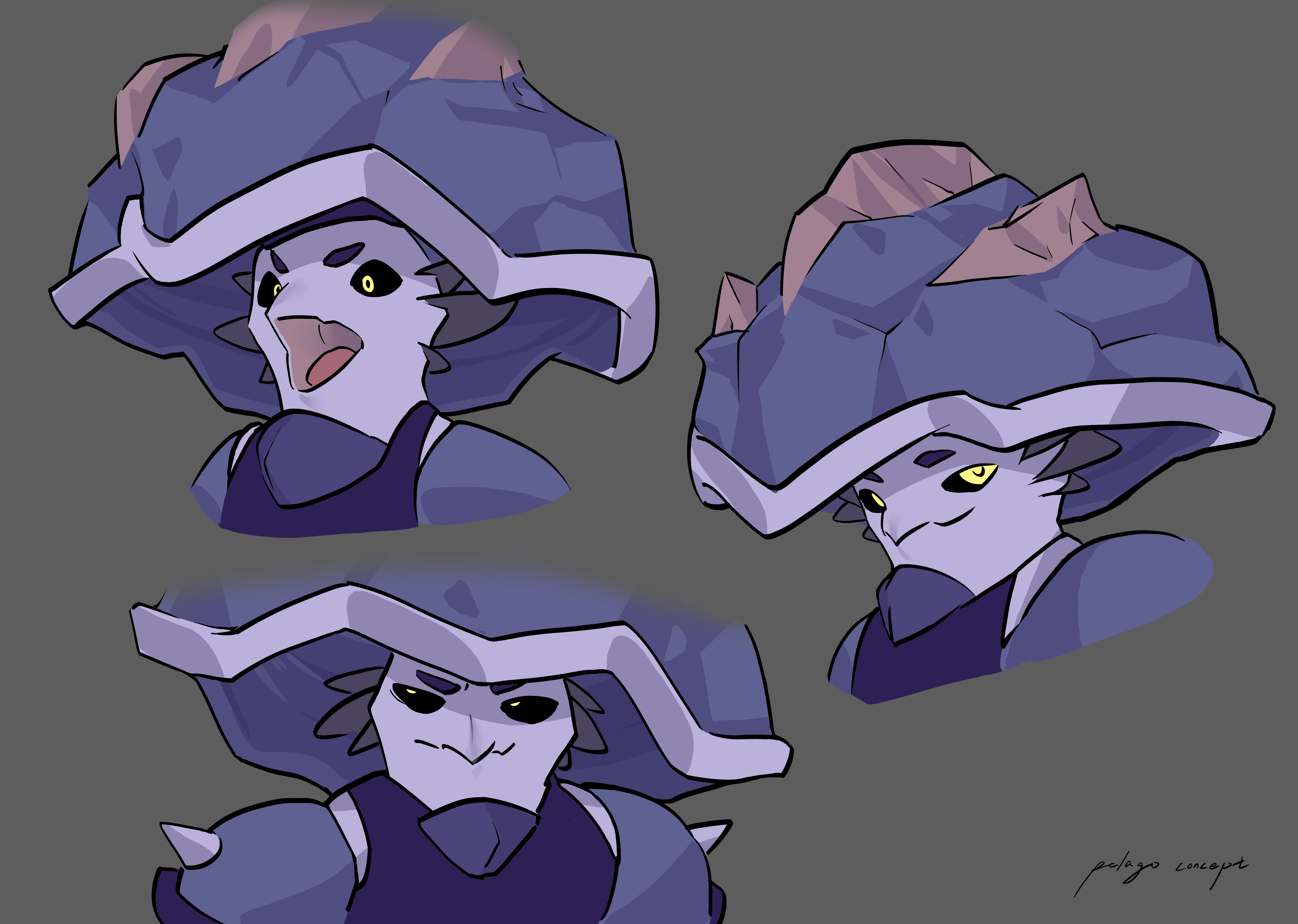
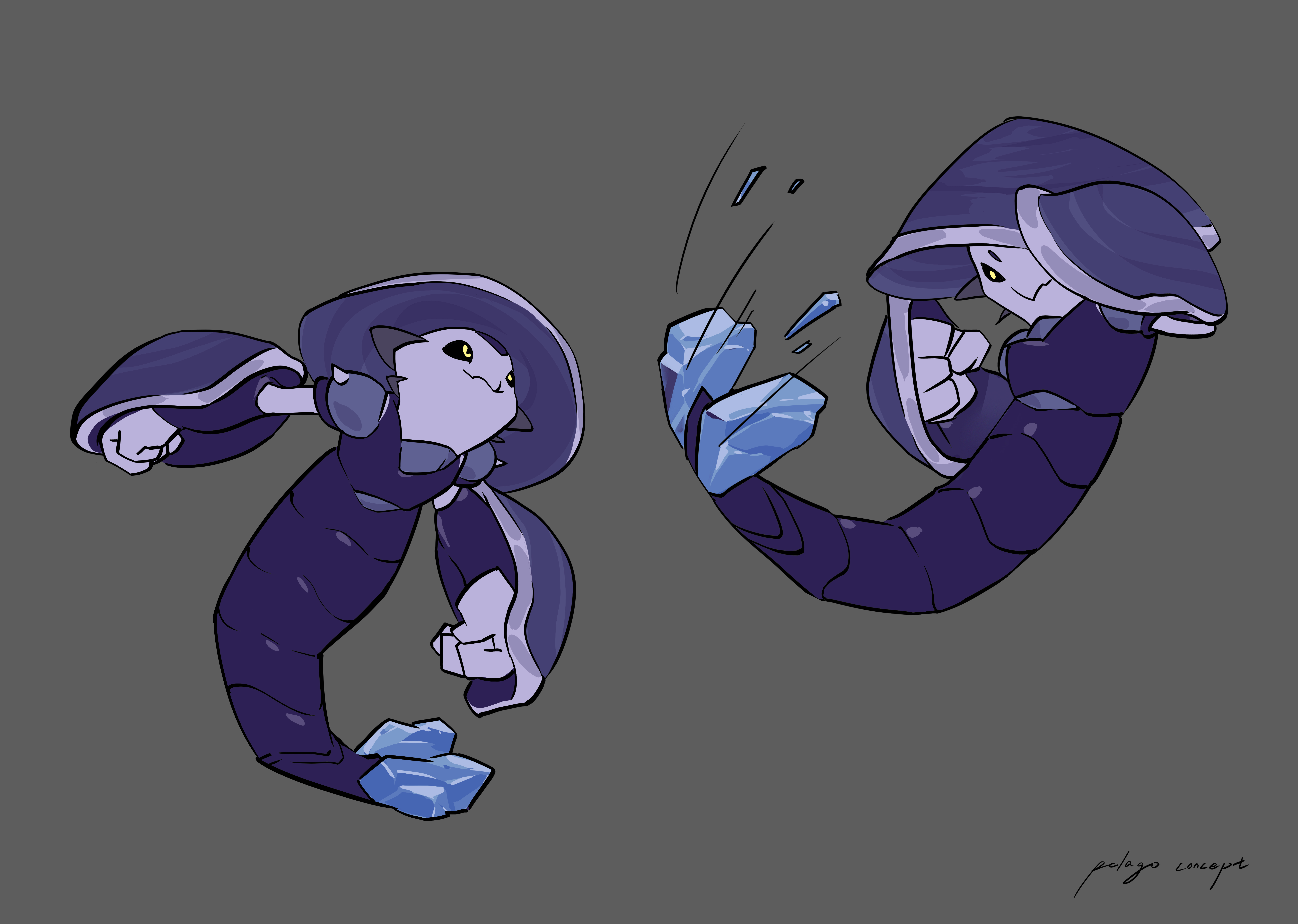
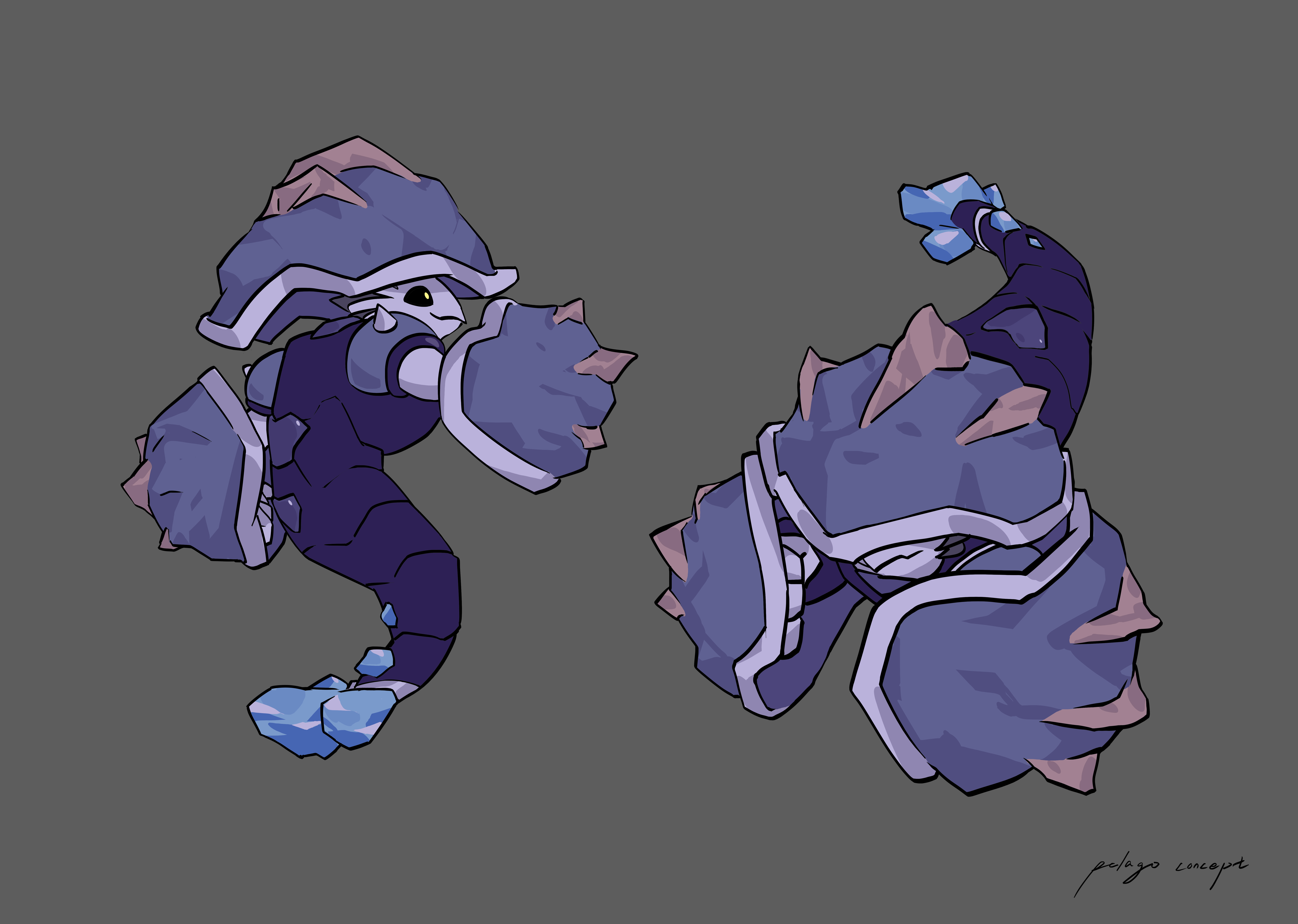



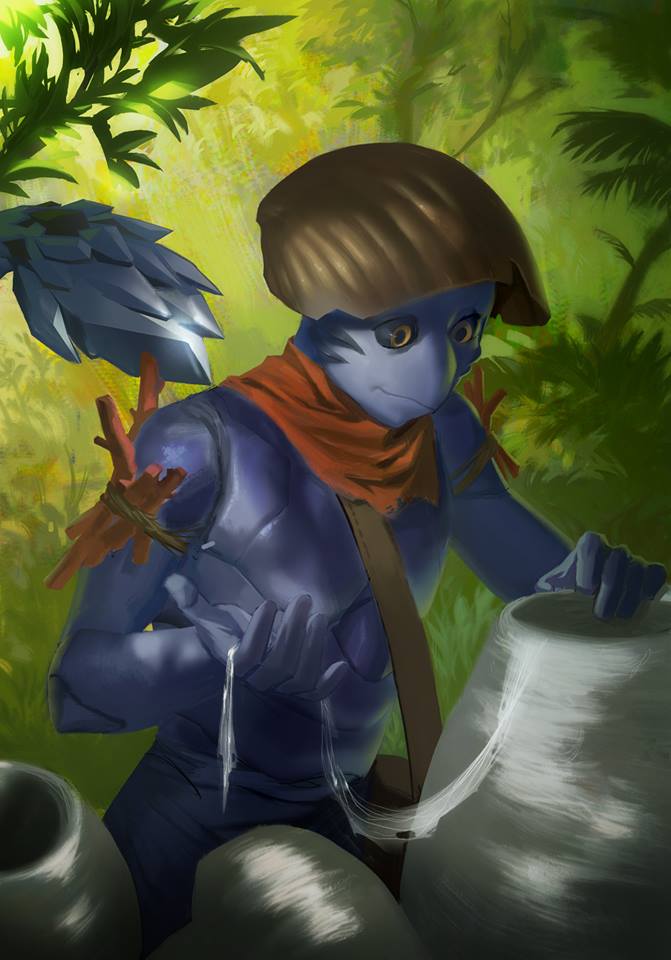


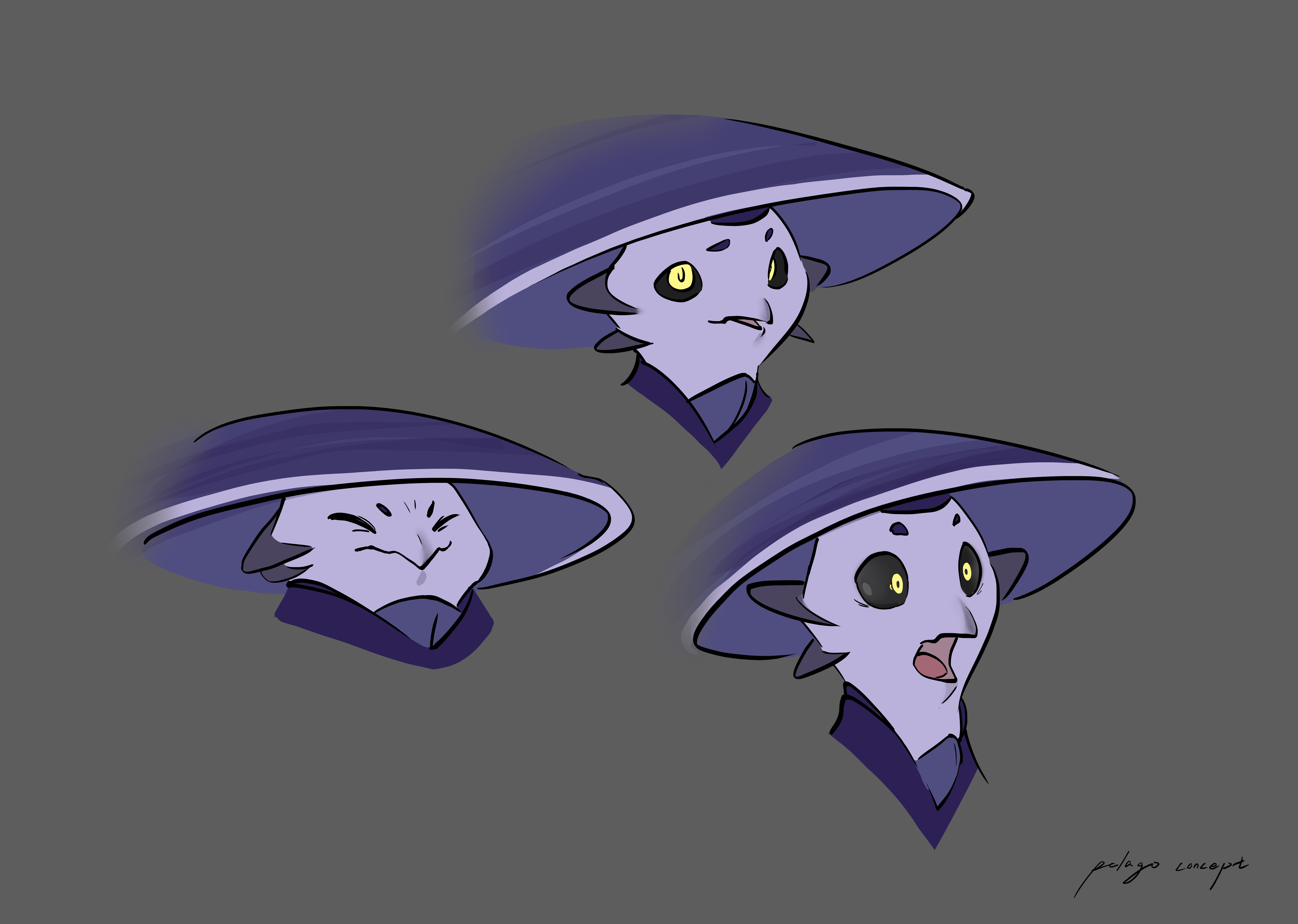
Comments